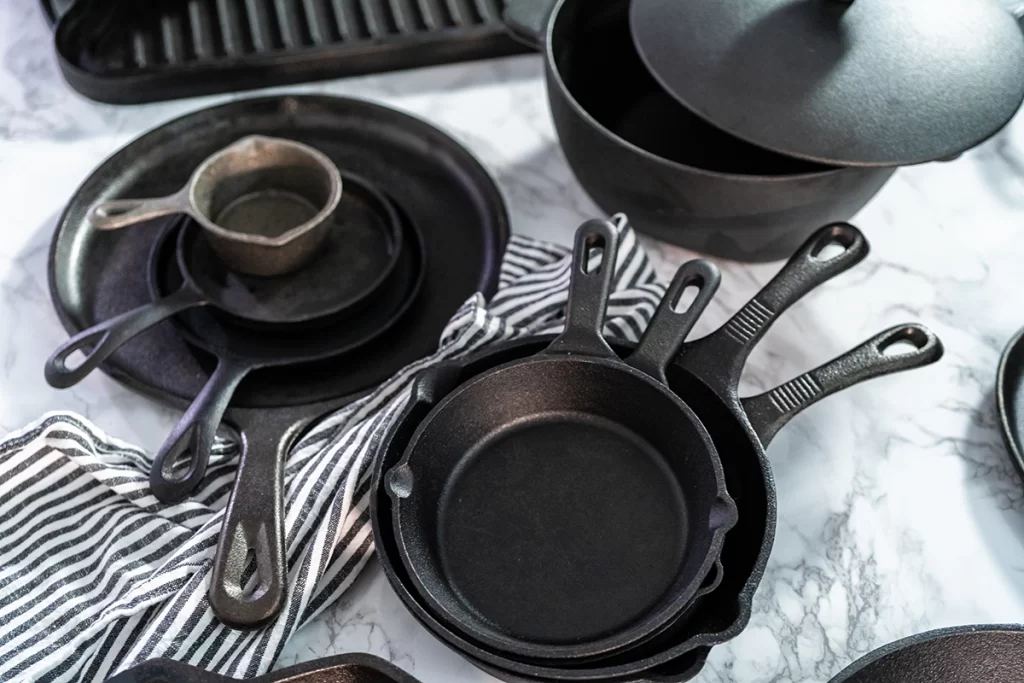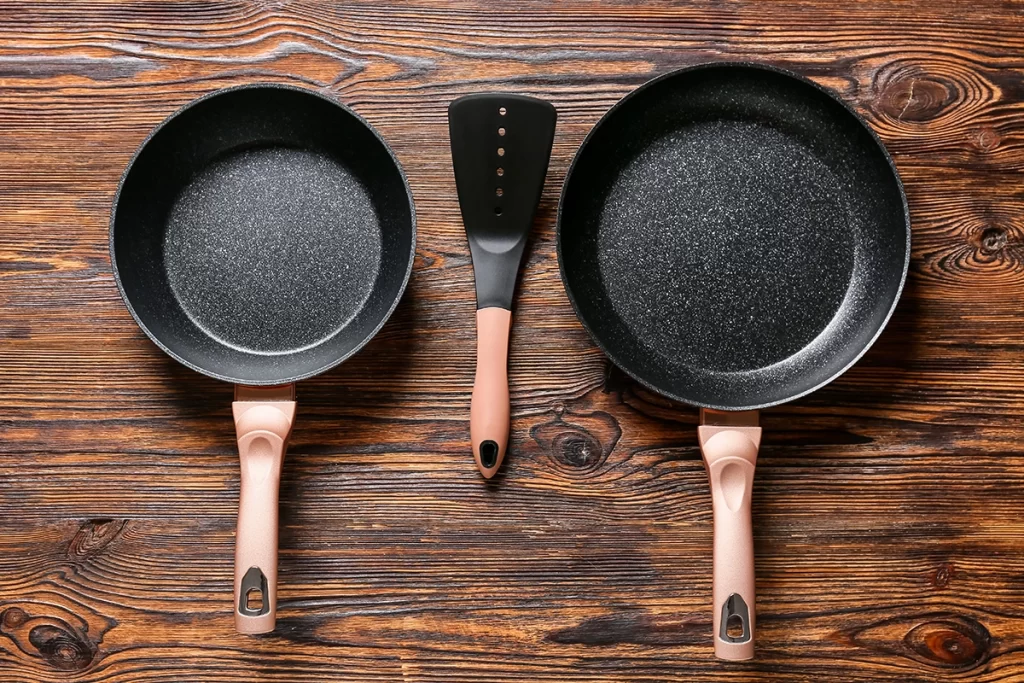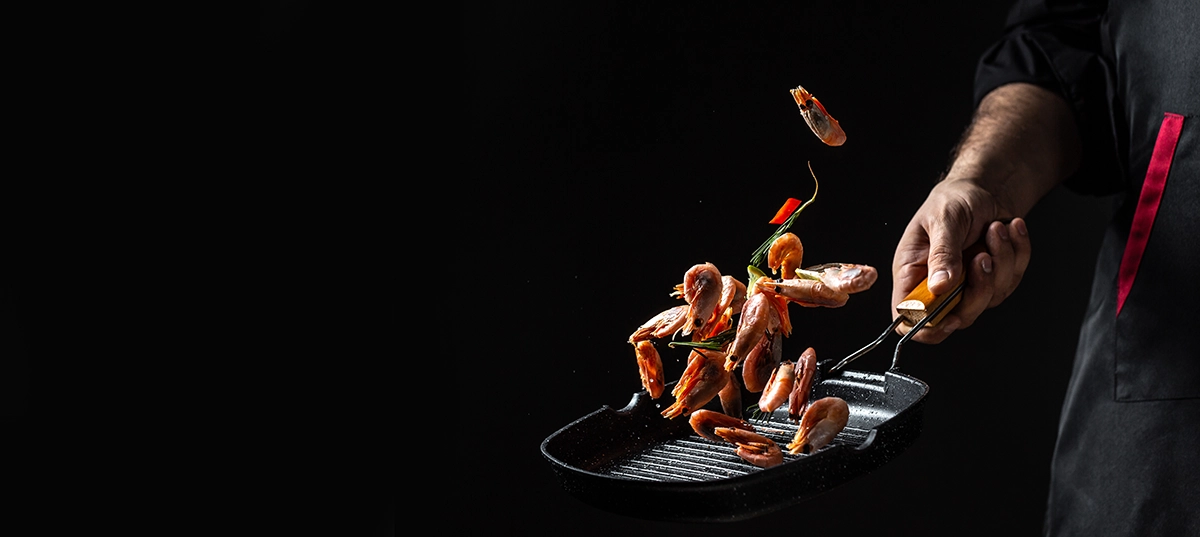Cast Iron or Non-Stick Pans: The Clash of the Cookware Titans
Choosing the right cookware for your kitchen is an important decision that can impact your cooking techniques, flavors, and overall ease of use. In the world of pans, two titans have emerged – cast iron and non-stick – sparking a great debate among home chefs. This article takes a detailed look at the pros and cons of each type of pan to help you determine which is better suited for your needs.
Are you ready to rumble in the kitchen? Because we’re diving head-first into one of the most heated debates among cooks everywhere – cast iron vs non-stick pans. It’s a culinary clash for the ages, a battle royale of stovetop supremacy. Which side will reign victorious? Let’s take a sizzling look!

In the red corner, weighing in at a hefty hunk of metal, we have the classic cast iron skillet. This sturdy, seasoned veteran has been duking it out in kitchens for centuries. Its traditional black coat shrugs off searing heat like a champ, and if treated right, it becomes practically non-stick through a nifty process called seasoning (the delicious”re kind, not salt and pepper).
But don’t let that burly exterior fool you – cast iron is a true culinary sculptor, able to create gorgeous browned crusts that would make a gourmet swoon. Whether you’re searing a succulent steak or frying up a crispy cornbread skillet, this old-school pan delivers distinctive flavors that’ll have your tastebuds thanking you.

In the blue corner, we have a sleek and shiny non-stick pan. This pan is the new kid on the block, coated with space-age materials that make it scientifically slippery. Eggs effortlessly slide around like bubbles on an air hockey table, and clean-up is an actual breeze (unheard of for most cookware). Non-stick is perfect for those healthy, lower-fat cooking methods where you don’t want food clinging for dear life to the pan.
However, despite its awesome food release, some home chefs lament that this “cheating” cookware doesn’t develop quite the same delectable sears and crusts as cast iron. And if you’re not delicate with utensils, that non-stick surface can become scratched and sad over time.
So which pan reigns supreme? The answer lies in your personal cooking style and preferences. If you value developing a delicious outer crust and caramelized fond (those browned food particles) on your seared proteins and other dishes, then classic cast iron is the pan for you. But if you prefer slick and easy over everything, get yourself some non-stick. No matter which side you choose, may the odds be ever in your flavor! 🔥
In Conclusion, Cast Iron or Non-Stick Pans
In conclusion, there are distinct advantages and drawbacks to both cast iron and non-stick cookware. Cast iron builds up a natural non-stick surface over time, produces excellent searing and crust formation, and has incredible heat retention. However, it requires more maintenance like seasoning, is quite heavy, and is not ideal for acidic foods. Non-stick pans are very easy to cook with, and clean up, are lighter in weight, and are perfect for cooking delicate foods or healthier recipes with minimal oil. But they don’t develop the same flavorful seared crusts, can lose their non-stick properties if mistreated, and some have potential health concerns over their coating materials. Ultimately, the pan you choose depends on your priorities – flavor development vs easy food release – and what you’ll be cooking most often. Many home chefs opt to have both types of pans in their arsenal to utilize their distinct strengths.

Join us on Facebook at Sherry Kay Cooks!
